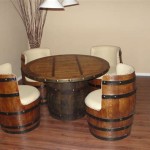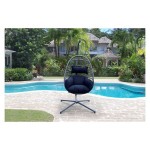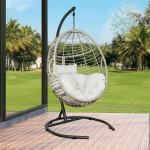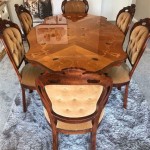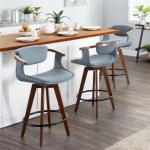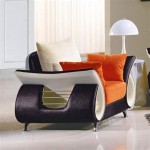The Enduring Appeal of Mid-Century Modern Chairs
Mid-century modern chairs represent a significant and influential design movement that continues to captivate enthusiasts and homeowners alike. Spanning roughly from the mid-1930s to the mid-1960s, this aesthetic emphasizes clean lines, organic shapes, and functionalism, often incorporating new materials and manufacturing techniques developed during the post-World War II era. The enduring popularity of these chairs stems from their timeless elegance, versatility, and ability to seamlessly integrate into various interior styles.
The principles of mid-century modern design were rooted in a desire for simplicity and accessibility. Designers sought to move away from the ornate and often cluttered styles of previous eras, embracing a more streamlined and practical approach. This philosophy resonated with a growing middle class that sought affordable yet stylish furnishings for their modern homes. The availability of new materials like molded plywood, fiberglass, and plastics further fueled the movement, allowing for innovative forms and mass production techniques.
The term "mid-century modern" encompasses a broad range of styles and designers, each contributing unique elements to the overall aesthetic. Scandinavian design, with its emphasis on natural materials and minimalist forms, played a pivotal role. American designers, like Charles and Ray Eames, George Nelson, and Eero Saarinen, further refined the movement, experimenting with innovative materials and pushing the boundaries of furniture design. The result is a diverse collection of chairs, each with its own distinct character and appeal.
Key Characteristics of Mid-Century Modern Chairs
Several defining characteristics distinguish mid-century modern chairs from other furniture styles. Understanding these features can aid in identifying authentic pieces and appreciating the design principles that underpin the movement.
One of the most prominent features is the use of clean lines and geometric shapes. Chairs often feature simple, uncluttered silhouettes, with a focus on form and function. Curves are often incorporated, but they are typically gentle and organic, mimicking natural forms. The emphasis is on creating a visually balanced and harmonious design.
The selection of materials is another key aspect. Mid-century modern designers frequently incorporated natural materials such as wood, particularly teak, walnut, and oak. These materials were valued for their warmth, durability, and natural beauty. Alongside wood, innovative materials like molded plywood, fiberglass, and plastics were widely used, allowing for greater flexibility in design and manufacturing. Upholstery played a significant role, with fabrics often featuring bold colors, geometric patterns, or textured weaves.
Functionality is paramount in mid-century modern design. Chairs are designed to be comfortable, practical, and adaptable to various living spaces. Ergonomics are often considered, ensuring that chairs provide adequate support and promote good posture. Many chairs are designed to be stackable or easily moved, reflecting the emphasis on flexibility and adaptability in modern living.
Iconic Examples of Mid-Century Modern Chairs
The mid-century modern era produced several iconic chair designs that remain highly sought after today. These chairs exemplify the movement's key principles and continue to inspire contemporary designers.
The Eames Lounge Chair and Ottoman, designed by Charles and Ray Eames in 1956, is arguably one of the most recognizable and influential mid-century modern designs. Featuring molded plywood shells and supple leather upholstery, this chair offers exceptional comfort and embodies the era's emphasis on both style and functionality. The Eames Lounge Chair and Ottoman has become a symbol of modern luxury and remains a popular choice for discerning homeowners.
Another notable example is the Tulip Chair, designed by Eero Saarinen in 1956. This pedestal-based chair features a fluid, organic form and is made from molded fiberglass. The Tulip Chair was designed as part of Saarinen's "Pedestal Collection," which aimed to eliminate the "slum of legs" found under traditional tables and chairs. Its sleek and minimalist design makes it a versatile addition to any modern interior.
The Wishbone Chair, designed by Hans J. Wegner in 1949, is a classic example of Scandinavian mid-century modern design. Featuring a steam-bent wooden frame and a hand-woven paper cord seat, this chair showcases the beauty of natural materials and the craftsmanship of traditional woodworking techniques. The Wishbone Chair is known for its comfort, durability, and timeless elegance, making it a popular choice for dining rooms and living spaces.
Factors Influencing the Enduring Popularity
The continued popularity of mid-century modern chairs can be attributed to a confluence of factors. These factors extend beyond mere aesthetics and encompass broader cultural and societal trends.
The emphasis on simplicity and functionality resonates with contemporary sensibilities. In an increasingly complex and fast-paced world, the clean lines and uncluttered forms of mid-century modern design offer a sense of calm and order. The focus on functionality ensures that these chairs are not only visually appealing but also practical and comfortable for everyday use.
The versatility of mid-century modern chairs allows them to seamlessly integrate into various interior styles. Whether incorporated into a minimalist, contemporary, or eclectic setting, these chairs can complement and enhance the overall aesthetic. Their timeless elegance ensures that they remain relevant and stylish, regardless of changing trends.
The enduring appeal of mid-century modern chairs is also fueled by a growing appreciation for craftsmanship and quality. Consumers are increasingly seeking out well-made and durable furniture that will stand the test of time. Mid-century modern chairs, often constructed from high-quality materials and crafted with meticulous attention to detail, embody these values. The investment in such pieces represents a commitment to both style and sustainability.
Furthermore, the nostalgia associated with the mid-century modern era contributes to its continued popularity. For many, these chairs evoke a sense of optimism, progress, and cultural innovation. The designs represent a time of significant social and technological change, and owning these pieces allows for a connection to this rich history.
The ongoing influence of mid-century modern design can be seen in contemporary furniture design. Many contemporary designers draw inspiration from the movement, reinterpreting its key principles and incorporating them into new and innovative designs. This ensures that the legacy of mid-century modern chairs continues to evolve and inspire future generations.

Mid Century Teak Dining Chairs Denmark Set Of 4 For Sale At Pamono

Handler Wood Mid Century Upholstered Dining Chair Set Of 2 World Market

Golden Velvet Mid Century Modern Dining Chairs Upholstered Accent With Stainless Chrome Base Set Of 2 Fy W114367601 The Home

Mid Century Modern Draw Leaf 70 Leg Table 6 Calypso Chair Set

Mid Century Dining Table Chairs By Schreiber Furniture 1960s Set Of 6 For Sale At Pamono

Mid Century Armchair And Ottoman Set Gray Vintage Lounge Furniture Handmade Accent Chairs Small Comfy For Living Room Etsy

Ashcroft Furniture Co Roxy Mid Century Modern Black Vegan Leather Dining Chair Set Of 2 Ash3261 The Home

Mid Century Leather Show Wood Chair West Elm

Mid Century Dining Chairs Upholstered Faux Leather Walnut Set Of 2 Room Homary

Mid Century Scandinavian Lounge Chairs From France And Son 1960s Set Of 2 For Sale At Pamono
